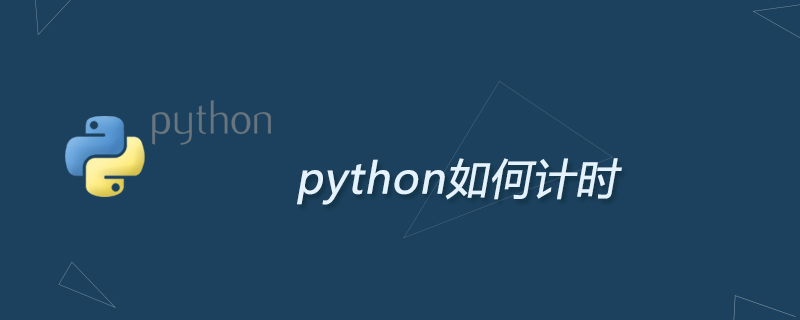python如何計時
- (*-*)浩原創
- 2019-06-29 14:08:015543瀏覽
計時對於了解程式的效能是很關鍵的部分。本文討論了Python 2和python 3中計時法。

python2和python3的通用計時方法(推薦學習:Python影片教學)
#由於python2和3裡面的計時函數是不一樣的,建議使用timeit模組中的timeit.default_timer()
由timeit.default_timer()的官方文檔可知,計時時間精度和平台以及使用的函數有關:
「定義在預設的計時器中,針對不同平台採用不同方式。在Windows上,time.clock()具有微秒精度,但是time.time()精度是1/60s 。在Unix上,time.clock()有1/100s精度,而且time.time()精度遠遠更高。在另外的平台上,default_timer()測量的是牆上時鐘時間,不是CPU時間。這意味著同一電腦的其他程序可能會影響計時。」
##python2中:
if sys.platform == "win32": # On Windows, the best timer is time.clock() default_timer = time.clock else: # On most other platforms the best timer is time.time() default_timer = time.time
python3中:
default_timer = time.perf_counter再由time.clock()的官方文件可以看出:“python3.3版本後time.clock()就過時了:這個函數的行為受平台影響,用time.perf_counter()”或time.process_time()取代來得到一個定義更好的行為,取決於你的需求。 」更多Python相關技術文章,請造訪
Python教學欄位進行學習!
以上是python如何計時的詳細內容。更多資訊請關注PHP中文網其他相關文章!
陳述:
本文內容由網友自願投稿,版權歸原作者所有。本站不承擔相應的法律責任。如發現涉嫌抄襲或侵權的內容,請聯絡admin@php.cn
上一篇:python如何運行程式碼下一篇:python如何運行程式碼

